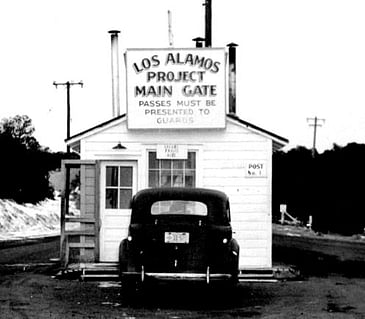In this episode of My Nuclear Life, Shelly Lesher continues her conversation with Richard Rhodes, author of award winning book, The Making of the Atomic Bomb. Their previous conversation left off with the time in history where the atomic bomb was only a theoretical plan in the scientific community. This episode picks back up with Richard introducing a man who managed the atomic bomb project named General Groves. He had been a part of many other projects, including the Pentagon. As soon as Groves was given the assignment, he wasted no time and immediately began building factories to create the materials for the new bomb.
Richard goes on to tell of another scientist who played an important part in the creation of the atomic bomb named Fermi. This man’s job was to engineer the first self-sustaining nuclear reaction, which was essential in creating the atomic bomb. He was stationed with many science recruits in the basement of an unused stadium at the University of Chicago. The physicists spent endless hours moving graphite and uranium into the basement of the stadium and turning in into their laboratory. They were successful in creating the nuclear chain reaction for the atomic bomb.
Next, Richard takes a turn and spends some time pointing out the great risks many scientists took, especially with radiation and explosions, out of the desire to help end the war. Because these men were being held back from the front lines, they were willing to put themselves in danger in the hopes of creating a weapon that would shorten the war or end it altogether. They were focused on speed more than on safety. They were fully aware of the dangers they faced, but were urged forward in their work by the knowledge of loved ones in the war.
Now that Fermi knew how to create a chain reaction, Richard goes on to explain how Groves began to shift his work to building power reactors using the technology found by Fermi. Groves chose another physicist named Oppenheimer to be the head over the development of the new weapon. Oppenheimer’s first move was to give the recruited physicists a place to come together and discuss the problems and process of creating the bomb. Groves was skeptical of this idea and wanted more secrecy, but allowed them to do this at a secure, isolated ranch in New Mexico called Los Alamos.
The episode ends with Richard sharing some of his own experiences with WWII. He remembers some of the ways he contributed to helping the cause even at a young age. Many people were propelled to help in any way they could out of fear and a desire to end the war. This was a time in America when everyone pitched in and had the same goal in ending the war and returning to a time of peace. Both Richard and Shelly point out how this kind of motivation for those who have not experienced war is hard to understand. Stay tuned for part 3 of Shelly’s conversation with Richard Rhodes in season 2 of My Nuclear Life.
Over his career, Richard Rhodes has authored 26 books exploring topics such as violent behavior, mad cow disease, the people and technologies of the Spanish Civil War, and most recently, 400 years of energy development. He is most well-known for his book "The Making of the Atomic Bomb” which weaves together world events, people, and scientific discoveries which allows the reader to experience the excitement of early 20th century physics. It has been hailed as THE book on the history of the atomic bomb by historians and physicists alike including Nobel Laureates who worked on the project. Additional honors for this work include the Pulitzer Prize for General Non-Fiction, the National Book Award for Nonfiction, and the National Book Critics Circle Award.
Special thanks: Lexie Weghorn
Production costs for this episode were provided through National Science Foundation Grant PHY-1713816.
Image Credit: Los Alamos main gate. https://www.atomicheritage.org/preservation-los-alamos





